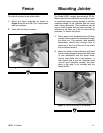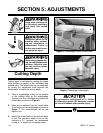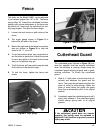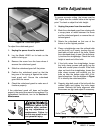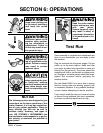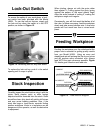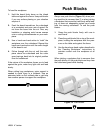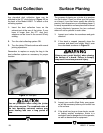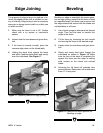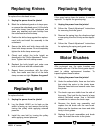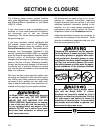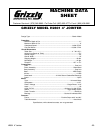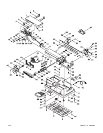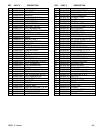
H2801 4" Jointer -19-
Beveling
Beveling an edge is essentially the same opera-
tion as edge joining, except that the fence is tilted
to a specified angle. Use extra care to ensure that
the edge makes solid contact with the infeed and
outfeed tables at all times.
1. Use a bevel gauge to determine the desired
angle. Then use the bevel to transfer this
angle to the fence.
2. Tilt the fence by loosening the lock handle
and moving the fence to the desired angle.
3. Inspect stock for soundness and grain direc-
tion.
4. Slowly and evenly feed stock through the
cutterhead as shown in Figure 18. Make
sure the face of the stock is completely flat
against the fence and the edge is making
solid contact on the infeed and outfeed
tables.
5. Achieving the full bevel will probably take
several passes. Remember not to take more
than
5
⁄64" in one pass.
Figure 18. Operator and fence position for
beveling an edge.
The purpose of edge joining is to produce a fin-
ished, flat-edged surface that is suitable for join-
ery or finishing. Edge joining is also a necessary
step prior to ripping stock to width on a table saw
or radial arm saw.
1. Make sure the fence is set to 90˚. Double
check with a try square or machinist’s
square.
2. Inspect stock for soundness and grain direc-
tion.
3. If the board is bowed (curved), place the
concave edge down on the infeed table.
4. Holding the stock firmly against the fence
and table. Feed the stock slowly and evenly
over the cutterhead. See Figure 17.
Figure 17. Operator position for edge joining.
Edge Joining



